The term ‘dappled horse’ often conjures images of majestic creatures with unique, speckled coat patterns that have enthralled equine enthusiasts for centuries. Not only are these horses a visual delight, but their dappling can also speak volumes about their health and lineage. In this comprehensive guide, we’ll delve into what constitutes a dapple horse, the breeds most associated with this trait, and the genetic factors that give rise to their stunning coats. We’ll explore their cultural significance and address common questions about their care and health. Whether you’re a seasoned equestrian or simply captivated by their beauty, understanding the dappled horse can enrich your appreciation for these remarkable animals.
Delving into the Mystique of the Dappled Equine
The dappled equine, with its mesmerizing coat pattern, embodies a blend of natural beauty and intricate biological markers. More than a simple aesthetic attribute, the dappling of a horse’s coat is a complex interplay of genetic influences and environmental conditions. It invites a deeper appreciation of the natural artistry at play and the conscientious efforts required to maintain these equine wonders. We will uncover the layers of meaning behind their distinctive markings, the genetic and environmental factors influencing their appearance, and the practices to enhance their coat’s unique beauty.
Interpreting Dapples: More Than Mere Markings
The presence and clarity of a horse’s dapples can provide insights into its health status, offering a glimpse into the animal’s internal vitality. A clear and uniform dappled pattern often signals a horse in prime condition, prompting owners and caretakers to monitor these visual cues closely. The dappling not only contributes to the horse’s striking appearance but also underscores the importance of responsible care and management.
Highlighting the Dappled Coat’s Unique Charm
The individuality of each dappled horse is reflected in the distinctiveness of their coat patterns. The allure of dappling is in its diversity, enhancing the horse’s natural color and showcasing the muscular contours beneath. A dedicated grooming routine can help to emphasize the dapples, providing a vivid contrast that highlights the horse’s physique.
Optimizing the Dappled Coat’s Luster
- Nutrition: Providing a diet rich in essential nutrients is critical for the development of a healthy, dappled coat. High-quality feed and suitable supplements contribute to the shine and quality of the coat.
- Care: Regular grooming, including brushing and cleaning, not only maintains the coat’s cleanliness but also promotes circulation, enhancing the horse’s overall glow.
- Shelter: Protecting dappled horses from extreme elements is vital for preserving their coat’s integrity and preventing damage to the distinctive dapples.
Genetic Roots of Dappled Patterns
The tendency to exhibit dapples is often a heritable trait, deeply rooted in a horse’s lineage. Certain breeds and bloodlines are more likely to produce offspring with pronounced dappling, highlighting the role of genetics in this trait. For breeders and enthusiasts, understanding these genetic factors is essential for predicting the likelihood of dappling in future generations.
The Evolving Tapestry of Dapples
Dapples are dynamic, changing over time with the horse’s development, seasonal shifts, and overall health. These variations offer a window into the horse’s life story, reflecting its growth and changes throughout its lifespan.
The Dappled Horse: A Tapestry of Nature’s Design
Each dappled horse is a living masterpiece, its story woven into the tapestry of its coat. These horses are revered not only for their visual appeal but also for their embodiment of health, genetics, and the care they receive, which together create a complex narrative as rich and varied as the dapples themselves.
Understanding the Intricacies of Dapples in Equine Coats
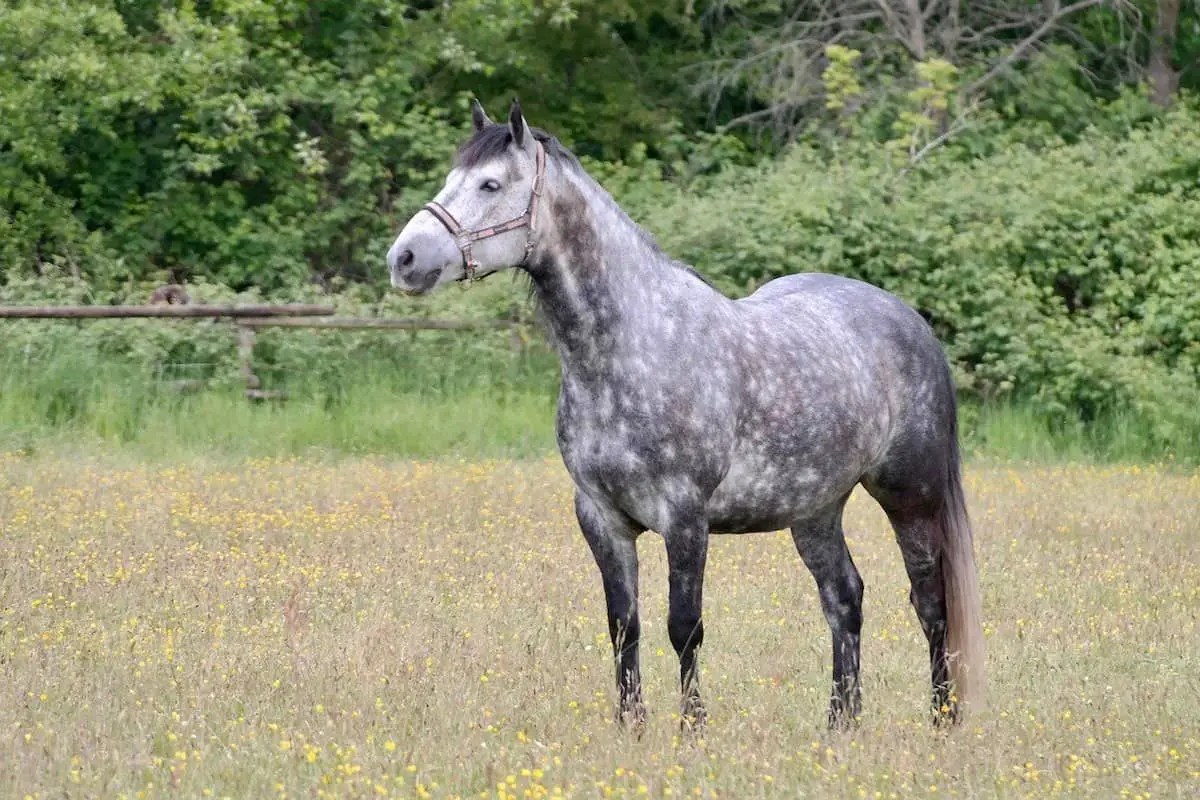
Encompassing a range of factors, dapples in horses serve as an indicator of the intricate biological and environmental interactions that affect a horse’s coat. This exploration delves into the underpinnings of these patterns, offering insight into their significance for horses and those who care for them.
The Unique Nature of Equine Dappling
Dapples are distinctive coat features, presenting as circular patches that vary in shade from the horse’s base coloration. These dynamic patterns can fluctuate in terms of visibility, reflecting an array of influences from the horse’s life and surroundings.
Assessing Equine Health through Dapples
Dapples are often associated with a well-conditioned coat, suggesting that the horse is receiving appropriate care and nutrition. These natural markings can act as indicators for equine professionals to assess the health and well-being of their horses.
Contributing Elements to Dapple Development
The development of dapples is a multifactorial process. While genetics lay the groundwork, other elements including the horse’s metabolic efficiency and the structure of its hair follicles also play roles in the emergence of these patterns.
The Role of Environment in Dapple Visibility
External conditions can significantly affect the expression of dapples on a horse’s coat. Access to natural elements such as sunlight and pasture can enhance the coat’s health and dapple vibrancy, while grooming techniques can influence their appearance as well.
Observing Dapples through Seasons and Ages
Dapples evolve with the horse, changing with seasonal cycles and as the horse matures. These patterns offer a visual representation of the horse’s aging process, particularly noticeable in grey-coated equines.
Nutritional Influence on Dapple Quality
A balanced diet is essential for maintaining a healthy coat and, by extension, clear dapples. The presence and quality of these markings can be an indication of the horse’s nutritional intake, with deficiencies potentially leading to a less vibrant coat.
In conclusion, dapples on horses are the result of a confluence of heredity, well-being, and the horse’s interaction with its environment. Recognizing these factors enriches our understanding of these equine marvels and the messages conveyed by their coats.
Delving into the Distinctiveness of Dappled Horse Breeds
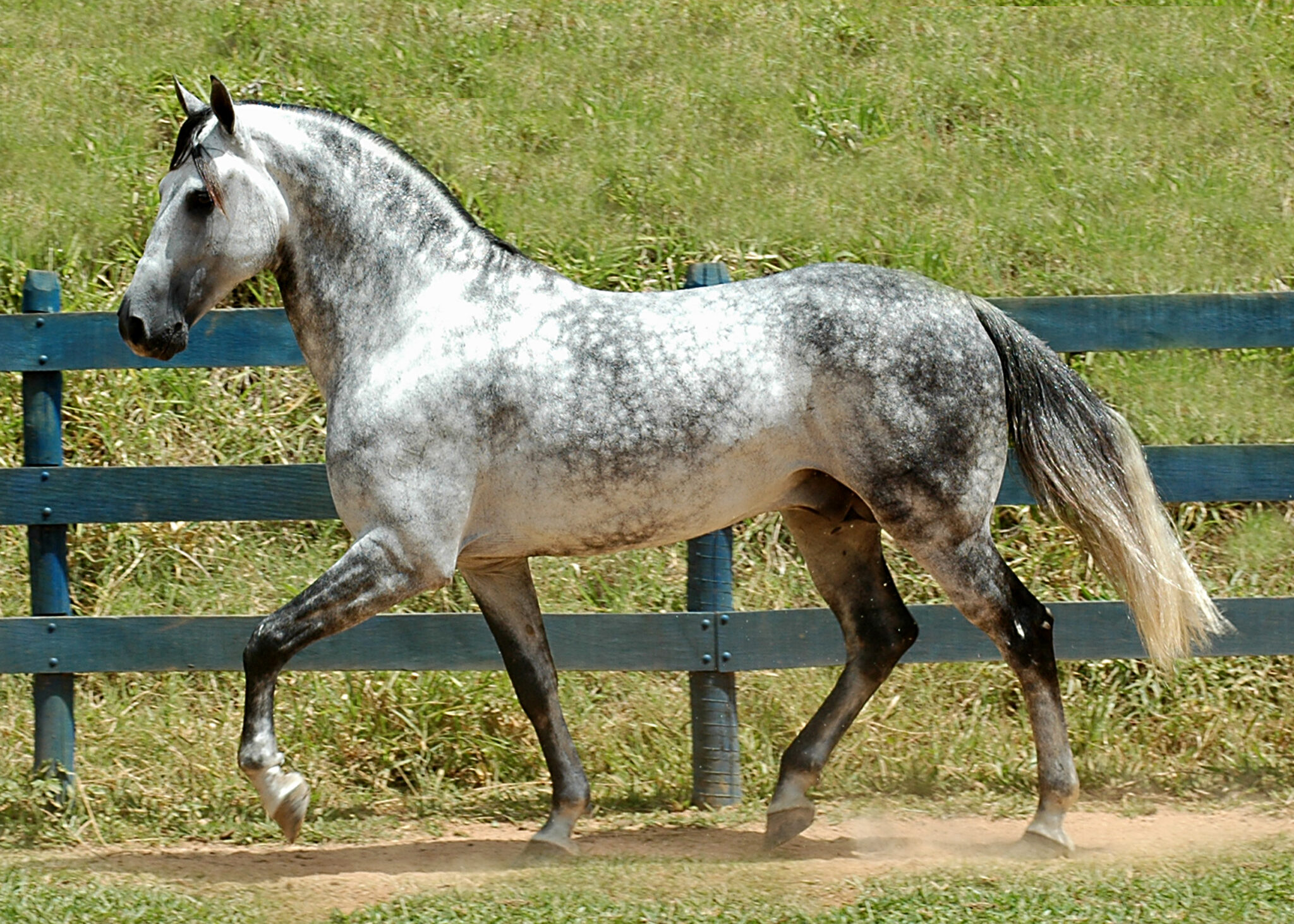
In the realm of equine splendor, a variety of breeds display the beguiling dappled patterns on their coats, creating a captivating spectacle for horse aficionados. These patterns are not merely incidental but are often integral to the breed’s identity, passed down through generations as a genetic legacy. This exploration will highlight the breeds where dappling is a defining trait, underscoring the genetic diversity and the enchantment it brings to equine aesthetics.
Examining the Breeds with Dappled Coats
While certain breeds like the Andalusian, Lipizzaner, and Arabian are widely recognized for their dappled coats, this trait is also prevalent in other breeds, which are equally noteworthy for their dappled beauty:
- Appaloosa
- Kentucky Mountain Saddle Horse
- Knabstrupper
- Gypsy Vanner
These breeds each contribute a distinctive dappling pattern, varying from subtle highlights to striking contrasts that capture the admiration of equestrians and spectators alike.
Dappling Beyond the Greys
While grey horses are commonly associated with dapples, these patterns transcend color boundaries and can be found adorning a multitude of coat colors. This section will explore how dappling enriches a broad spectrum of equine coats with additional allure and complexity.
Dapple Variations Across Coat Colors
The interaction between a horse’s base coat color and its dapples can significantly affect the pattern’s prominence and visual appeal. Here are examples of how dappling can enhance different coat colors:
- Grey: Dapples are often more visible on grey horses and may become increasingly pronounced with age.
- Bay: When present on bay horses, dapples can add a luxurious, velvet-like texture to their rich coat.
- Chestnut: On chestnut coats, dapples may be more understated but still contribute an elegant sheen to the horse’s appearance.
Genetics and Coat Color Synergy in Dappled Horses
A deeper understanding of the genetic mechanisms behind dappling in these breeds provides insight into the interplay between dapples and base coat colors, enabling breeders and enthusiasts to better predict and admire the nuances of dappled horse coats.
Anticipating Dapples in Breeding
Certain breeds have known inheritance patterns that can help predict the appearance of dapples in their progeny. For example, Andalusians are often genetically inclined to develop grey coats with noticeable dapples, while Lipizzaners carry genes that produce a lighter coat with a dappled motif.
Dynamic Patterns in Dappled Horse Coats
The dappled coat is a canvas of continual transformation, influenced by environmental factors, the aging process, and the changing seasons. We will examine the factors that contribute to the evolving appearance of dapples in these breeds, highlighting the ever-changing beauty of their coats.
Influence of Seasonal Changes on Dapples
The definition and intensity of dapples can shift with the seasons, affected by variables such as molting, sun exposure, and dietary changes throughout the year.
Ultimately, the dappled horse breeds stand as a testament to the rich tapestry of equine coat patterns. Their dapples not only add to the visual drama but also tell a story of genetic inheritance and the adaptability of these majestic breeds, as they display the entrancing patterns that define their coats.
Unveiling the Genetic Mysteries of Dapple Horse Patterns
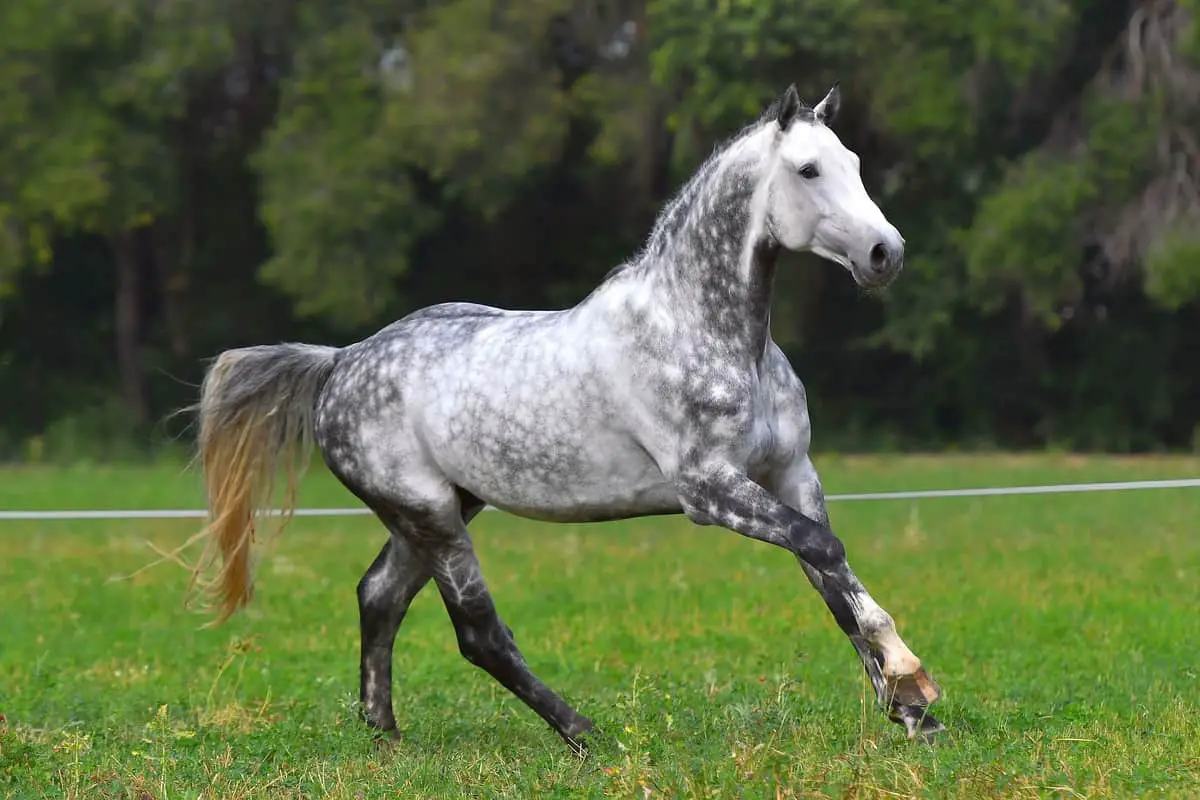
The striking patterns displayed by dappled horses are an amalgamation of complex genetic information and the manifestation of their ancestors’ DNA. The ongoing advancements in the field of equine genetics are shedding light on the intricate mechanisms behind these captivating coat designs. This segment focuses on the genetic aspects that lead to the manifestation of dapple patterns, a subject of great interest to both equine enthusiasts and genetic researchers.
Analyzing Genetic Contributions to Dapple Patterns
Investigating the genetic basis for dapple patterns entails a deep dive into equine DNA. Researchers are identifying specific gene variants that predispose horses to develop these patterns. Such scientific endeavors aim to demystify the genetic interactions that culminate in the dappled phenotypes we observe.
Modifying Factors in Dapple Phenotypes
Aside from the primary coat color genes, there are modifier genes that can influence the appearance of dapples. These genetic elements may direct the distribution and concentration of pigmentation in the hair, contributing to the distinctive dappled appearance.
Tracing the Genetic Lineage of Dapples
Not all horses have an equal genetic propensity for dappling, suggesting that some lineages have a genetic architecture that promotes these patterns. This understanding is particularly valuable to breeders who seek to produce horses with a dappled coat.
- Lineage Analysis: Studying the pedigrees of horses with pronounced dapples may help identify heritable factors that govern this trait.
- Diversity Among Breeds: Various breeds may possess distinct genetic configurations that result in the array of dapple patterns observed among different equine populations.
Interplay of Genetics and Environment
The interrelation between a horse’s genetic makeup and its environment plays a role in the expression of dapple patterns. Factors such as diet, living conditions, and grooming practices can either enhance or diminish the genetic likelihood of a horse developing dapples.
The Impact of Epigenetics on Dapple Manifestation
Epigenetics explores how external influences can modify gene activity without changing the DNA sequence itself. Such epigenetic modifications might impact how dapples present and their definition on the horse’s coat.
Progress and Predictions in Equine Genomic Research
The expansion of genomic science is revealing more about the genetic elements that dictate equine coat colors and patterns. This burgeoning knowledge promises to refine the prediction and understanding of dapple pattern inheritance.
- Enhanced Genetic Insights: Modern genetic tests offer breeders and enthusiasts greater clarity regarding a horse’s predisposition toward dappling.
- Strategic Breeding Advances: With more comprehensive genetic knowledge, breeding programs can be designed to either promote or conserve the presence of dapples among horse populations.
In summary, the enigmatic genetic framework of the dappled horse is progressively being deciphered, painting a clearer picture of the elements that give rise to this beautiful trait. As the scientific community deepens its understanding of these genetic influences, the world of horse breeding and appreciation will undoubtedly benefit from these revelations.
Supporting the Health and Appearance of Dappled Equines
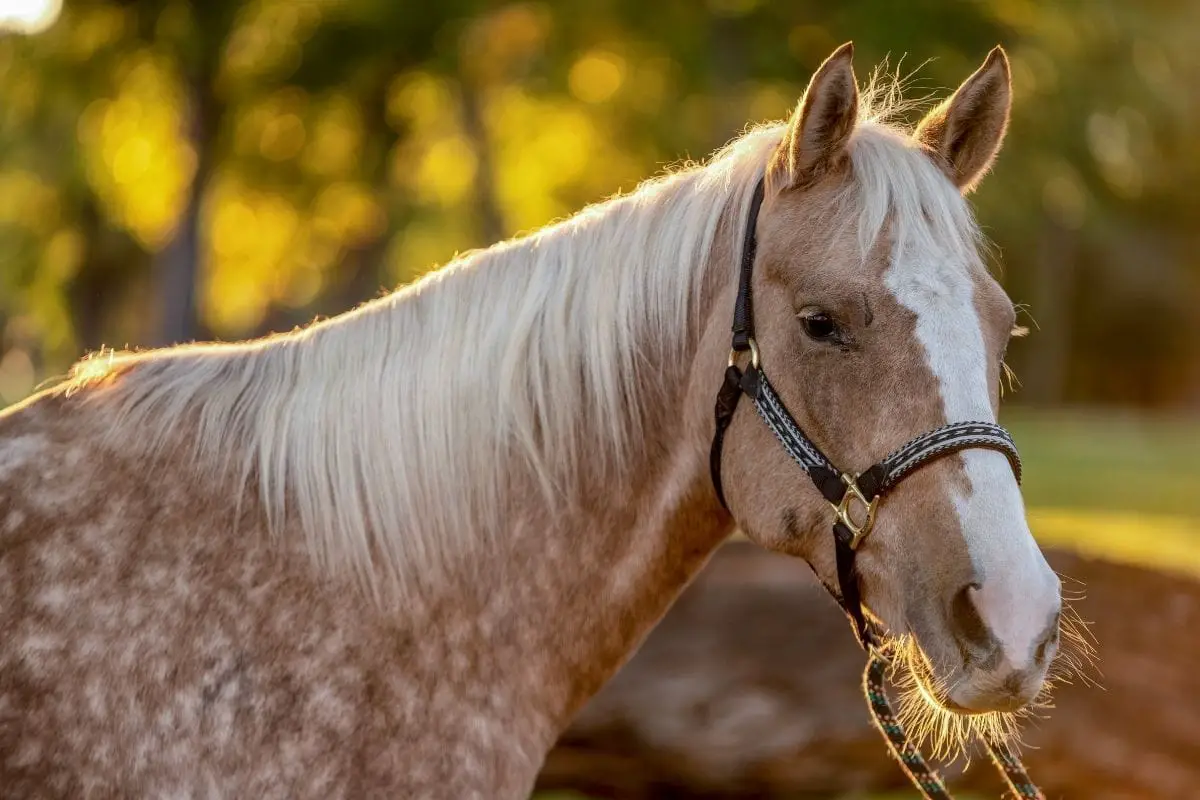
Maintaining the health of dappled equines is a multifaceted endeavor that requires careful consideration of their dietary and grooming needs, as well as an awareness of the changes they undergo throughout their lives. This segment will outline the holistic measures necessary to nurture the distinct coat patterns of dappled horses, emphasizing the importance of personalized care in promoting their well-being and the beauty of their dappling.
Key Nutritional Elements for Coat Brilliance
A nutritional regimen that supports coat health is vital for enhancing the dappling on a horse’s coat. The inclusion of essential fatty acids is crucial for nourishing the skin and adding a lustrous sheen, while antioxidants help protect the coat from environmental stressors. Minerals such as zinc and copper are indispensable for pigmentation and tissue repair, aiding in the maintenance of clear dapple patterns. A comprehensive diet should include:
- Quality forage as the foundation
- Grains fortified for optimal coat condition
- Specific supplements aimed at enhancing coat health
Such a diet is instrumental in promoting the exquisite dappled appearance these horses are known for.
Effective Grooming Practices for Dappled Coats
Specialized grooming techniques are essential to accentuate the dappling on a horse’s coat. Selective washing with products tailored to the horse’s natural coat color can significantly improve the look of dappling. The application of coat conditioners or gloss-enhancing sprays after a bath can provide additional sheen. Regular grooming should also:
- Include the use of a soft brush to polish the coat gently and boost its shine
- Incorporate a massage to stimulate circulation for better coat health
These practices not only cleanse but also invigorate the coat, allowing the dappling to be displayed prominently.
Adapting Care with the Horse’s Aging Process
As horses age, their coats go through various transformations that can affect the appearance of dappling. Observing these shifts and customizing care routines to match the horse’s evolving needs are important. This may involve:
- Revising dietary provisions to match an older horse’s metabolic requirements
- Altering grooming methods to accommodate changes in coat condition
- Keeping an eye out for skin issues that could impact coat appearance in older horses
Through vigilant care, the dappled coat can remain vibrant and healthy at any stage of the horse’s life.
Accounting for Environmental Impact on Coat Patterns
The living conditions of a dappled horse play a significant role in the preservation of its coat’s health and the prominence of its dappling. Adequate protection from the elements, such as intense sunlight or sustained moisture, is necessary to prevent damage to the coat. Measures such as providing access to shaded areas, appropriate shelters, and protective gear during unfavorable weather are beneficial. Furthermore, keeping the horse’s habitat clean and dry helps thwart skin issues that could detract from the coat’s appearance.
By adopting a comprehensive approach that integrates precise nutrition, dedicated grooming, and environmental care, horse caretakers can ensure that dappled equines display their speckled coats to their full potential, reflecting their overall health and the meticulous attention they receive.
Exploring the Legacy of Dappled Equines
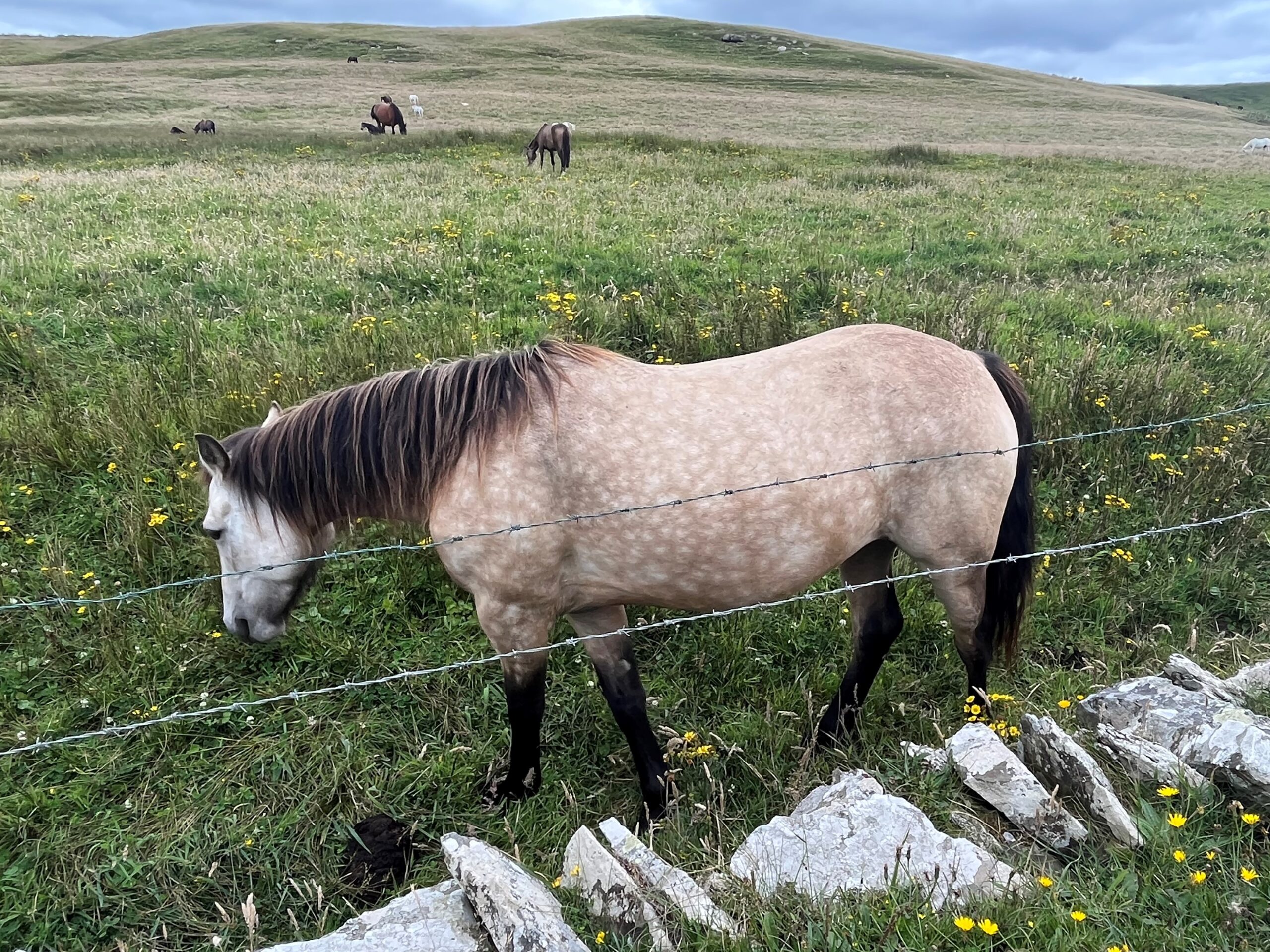
The dappled horse carries a legacy that surpasses its distinctive coat, permeating the cultural and historical tapestry of human societies. These speckled equines have trotted through diverse eras and territories, symbolizing various ideals such as status, spirituality, and courage. Their influence is evident in the narratives of ancient lore, the chronicles of past civilizations, and the expressions of artists and scribes.
Dappled Equines in Myth and Legend
Mythologies from various cultures have elevated the dappled horse to a mystical status, often attributing them with supernatural attributes and linking them to gods and celestial events.
- In the rich tapestry of Norse myths, the god Odin’s steed, Sleipnir, stands out with its unique attributes and mystical dappled coat, resembling the starry heavens.
- The ancient Greeks portrayed Apollo, the luminary deity, with a chariot drawn by dappled horses, a metaphor for the interplay of light and darkness.
Dappled Equines Throughout History
The allure of dappled horses has been recognized by historical figures who have utilized these majestic animals as symbols of their stature and might.
- Bucephalus, the renowned mount of Alexander the Great, is immortalized in texts as a magnificent creature with a dappled coat that reflected the grandeur of his rider.
- Knights of the medieval era often chose dappled horses for tournaments, with their coats serving as backdrops for heraldic emblems.
Influence on Arts and Literature
The grace of dappled horses has been a source of inspiration in the arts, capturing the imagination of creatives throughout the centuries.
- In the Renaissance era, dappled horses graced canvases and tapestries, symbolizing nobility and refinement.
- The narratives of the romantic period wove tales around dappled horses, imbuing them with notions of gallantry and epic quests.
Traditions and Beliefs Surrounding Dapples
The distinct patterns of dappled horses have also been steeped in symbolism and folklore, with their coats often interpreted as signs of fortune or omens.
- In various traditions, the ownership of a dappled horse was seen as a harbinger of good luck and prosperity.
- Yet, in other beliefs, the sighting of a dappled horse was thought to herald significant shifts or moments of transformation.
Dappled Horses in Military History
On the battleground, dappled horses have stood out as emblematic figures, with some gaining notoriety for their roles in key historical events.
- Marengo, the famed Arab horse of Napoleon Bonaparte, was a dappled grey whose presence became synonymous with the emperor’s military campaigns.
- Similarly, the dappled Copenhagen carried the Duke of Wellington, its distinct coat a notable contrast to the somber hues of warfare.
The dappled horse’s narrative is intricately interwoven with the strands of human history and cultural evolution. These equines have not only captured the hearts of those who behold their beauty but also become enduring symbols in the stories we tell, from the ethereal realms of gods to the tangible grounds of battlefields. Their enduring image continues to inspire, illustrating the depth of the bond between humans and these dappled companions.
If you’re curious about the various types of horses and their unique characteristics, you might enjoy exploring our specialized articles. For horse enthusiasts looking to understand more about specific horse patterns and traits, our guide on what is a dappled horse offers a detailed look into the world of these beautifully patterned animals. Additionally, for those interested in learning about different horse breeds and terms, check out our explanations of what is a gaited horse, the distinctive features of what is a piebald horse, and the meaning behind what is a gelding horse. Each article provides valuable insights into the fascinating equine world.
FAQs: All About Dappled Horses
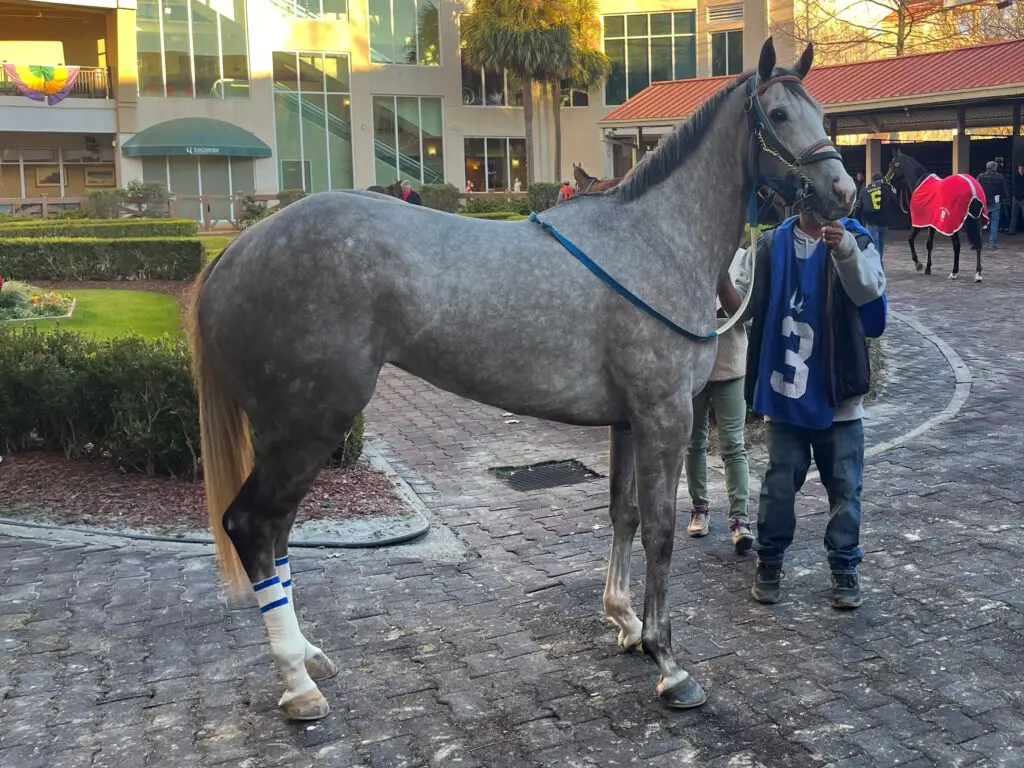
Can Non-Grey Horses Have Dapples?
Yes, while grey horses are most commonly associated with dapples, other coat colors can also exhibit dappling, especially when in excellent health and condition.
Are Dappled Horses More Prone to Health Issues?
There is no evidence to suggest that dappled horses are more susceptible to health problems than non-dappled horses. However, grey horses may be at a higher risk for certain skin conditions such as melanoma.
Is Dappling a Sign of Good Horse Health?
Dappling is often regarded as a sign of good horse health, as it can indicate that the animal is well-nourished and cared for. However, it’s not a definitive measure and should be considered alongside other indicators of health.



